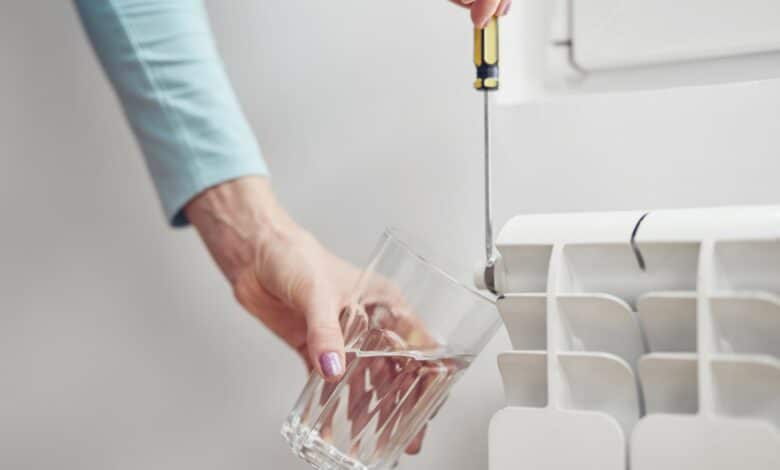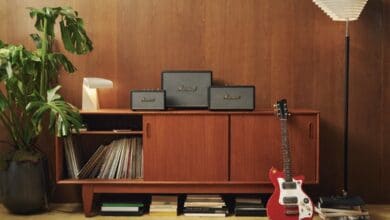
With the first cold days, the heating system comes back into focus. But most of the time, a smooth start after such a long standstill remains wishful thinking. The radiators stay cold and the entire system makes gurgling noises? In this case, air in the system is often the culprit. At this point, bleeding the heating system helps to restore heat circulation. However, not only in the case of obvious problems, but also to prevent them and increase energy efficiency, radiator bleeding is a useful method. In the following sections, we explain how you can bleed your heater yourself and what you should keep in mind.
Bleed heating properly: What are the benefits of the procedure?
Bleeding old heaters is not just something you can do casually within a short period of time. Rather, it is a necessary maintenance measure that you should definitely perform regularly – at least once a year, preferably when you start the heating season. Properly bleeding radiators optimizes your heating system in several ways:
- Air bubbles in the heating system can have a significant impact on the circulation of hot fluid. When air builds up in the radiators or piping, it can impede the circulation of hot fluid and cause cold spots in the radiator. Cold spots mean the radiator can’t provide its full heat output, which in turn can lead to a cooler room and an uncomfortable living environment. Venting the heater helps to remove this air, which allows for better heat circulation, ensuring more efficient heat delivery throughout the room.
- A heating system filled with air requires more energy to reach the desired room temperature. This is because the heater has to work harder to overcome the barrier caused by the air. If you vent the heater properly, you’ll reduce energy consumption, which will have a positive impact on your energy bills.
- Regular venting can also help extend the life of your heating system. Air in the system can lead to corrosion, which can damage the heating system. Venting removes the air, which reduces the likelihood of corrosion. This results in long-term cost savings by delaying the need for expensive repairs or replacement of the heating system.
- Another benefit of venting is the reduction of noise in the radiators and piping. Air in the radiators can cause gurgling or knocking, which can be particularly annoying at night. Venting the heating system helps eliminate these noises, which contributes to a quieter and more comfortable living environment.
How to detect air in the system
You don’t need any special measuring tools to determine if air has accumulated in the heating circuit. The most common signs include, for example, cold spots on the radiators, as well as a noticeably worse heating performance than usual. In addition, in this scenario, it can also happen that some radiators in your four walls become warm, while others remain completely cold. This phenomenon is especially common on higher floors, as air bubbles usually rise and prevent hot water from reaching the top.
Furthermore, your radiators or the pipes may make gurgling or gurgling noises when air bubbles move through them. Then, at the latest, the motivation to do something about it is great. Because the next heating bill is sure to come, and with an efficient heating circuit you can keep your energy costs at the lowest possible level.
How do you bleed a heating system?
Before you start bleeding a heater, it’s important to make sure you have everything you need on hand. You’ll ideally need the following utensils to get the job done as smoothly and cleanly as possible:
- A tool for bleeding the heater – wrench or combination tool with integrated collection container, depending on the space you have, you should choose one
- Bucket and rag for any water that may leak
- For the cautious among us: gloves and, if the heating circuit is still at operating temperature, if necessary, protective goggles are not a bad investment
You should also make sure that the heating is turned off during the process. This also applies to the circulating pumps, which otherwise maintain the pressure in the system.
Bleed the heating system – step by step to a warm home
Once you’ve decided to shut down the heater for this maintenance procedure, or just keep it running on a hunch, you can gear up and get started. It’s best to start at the lowest points in the house, preferably near the boiler, and then work your way up to the higher floors.
- Make sure there is enough room to place the water tank under the valve. Keep in mind that the water in the pipes can come out at high pressure, so be careful not to stain delicate surfaces. Or cover them with a cloth if necessary.
- After that, open the thermostatic valve by turning it to the highest setting. So water can flow after and the air better escape from the radiator.
- Locate the vent valve in the upper side of the radiator and turn the outlet opening, if necessary, diagonally downward pointing in your direction. This way you can make sure that the escaping water lands safely in the bowl.
- Put the key on the valve and turn it counterclockwise to open the valve. As soon as water comes out and no more air comes out, close it again.
- Clean all the dirt, if necessary, and repeat the process for all other radiators. If it is a larger number, you can also create a checklist, which you then work off in order.
Bleed heating – not all keys are equal
Depending on the radiator model and age, you may need a special bleeding key for the system. These are very simple tools, but they can save you a lot of headaches if you use the appropriate key. It is not advisable to use a combination pliers or other makeshift tools as you may damage the valve. Basically, there are three different types of wrenches, which you can even order as a set. The most traditional is the square key, a simple square key that can open most valves. More modern radiators may require an Allen key, so in this case it’s best to measure beforehand.
Do you still have antique models in your home? In this case, an ordinary flat-blade screwdriver may be sufficient to open the valves. In any case, make sure that the wrench fits exactly. If you’re unlucky, you may be able to open the valve, but you won’t be able to close it – and then, at the latest, you’ll need a larger container. A compact version of the latter can be a sensible investment to avoid spraying escaping water in the area. However, as a private user, you can do without further tools such as a special venting device.
Heating check after bleeding
As soon as you have bled all radiators, you should carry out a short heating check. Check the pressure in your heating circuit and add water if necessary, if the value is below the target mark. However, do not fill the system with too much water, as this will expand even more during operation and may trigger the overpressure valve. If you still hear gurgling noises after the procedure or if you still suspect air in the system, you can repeat the process. Often it is even necessary to build up pressure again to force the last of the air towards the radiator.




No replies yet
Neue Antworten laden...
Gehört zum Inventar
Beteilige dich an der Diskussion in der Basic Tutorials Community →